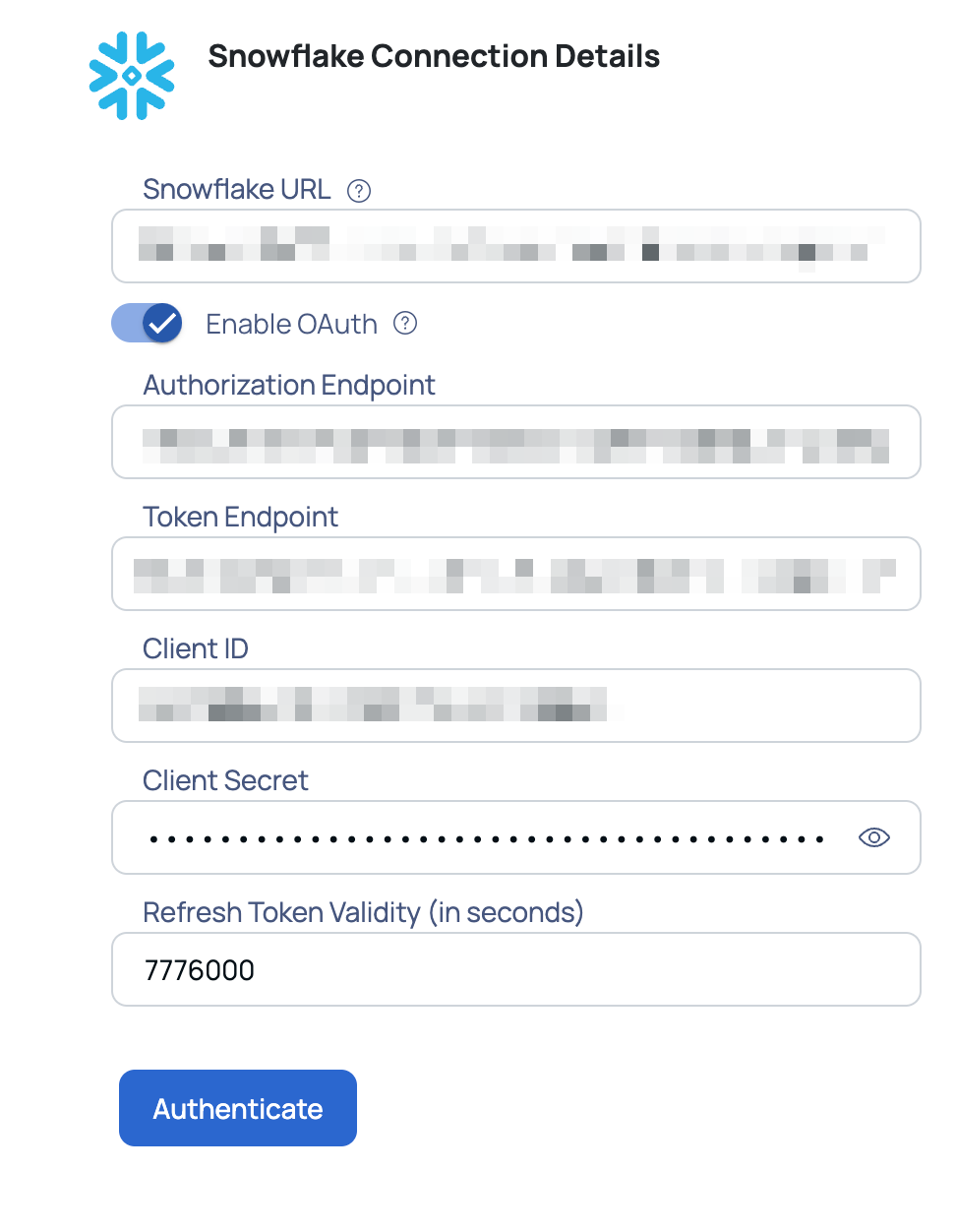Observe Snowflake
This document will walk you through monitoring, operationalizing, and optimizing your Snowflake setup using the metrics that are given by ADOC.
Introduction to Snowflake
Snowflake is a cloud-based data warehouse platform that offers a managed and scalable environment for storing, processing, and analyzing huge amounts of data. It takes a modern approach to data management, with features including automated scaling, compute and storage separation, and support for structured and semi-structured data. The cloud-native architecture of Snowflake eliminates the need for customers to manage physical infrastructure, allowing them to focus on extracting insights from their data. Businesses utilize it extensively for data analytics, business intelligence, and data-driven decision-making.

Snowflake Integration with ADOC
When you add your Snowflake instance as a data source in ADOC, you can view insights on your Snowflake instance.
The following is a list of the several benefits that come from integrating Snowflake with ADOC:
- You are provided with an all-encompassing perspective on your Snowflake data platform.
- ADOC makes it easier for you to cultivate a culture of cost-consciousness inside your organization, which ultimately results in more control and reduced spending.
- You are provided with notifications, actionable insights, and the identification of anomalies. In addition, you will be given reports covering the areas of cost, administration, usage, and performance.
- Monitoring day-to-day duties such as administration, troubleshooting, housekeeping, billing, and consumption forecasts is made simple for you.
You can quickly onboard by entering the details of your Snowflake account. You may simply sign up by entering the details of your Snowflake account.If you have the Snowflake connectors installed, you will be able to see the ADOC observability for the Snowflake metrics in the Compute application's secondary pane.
ADOC OAuth Implementation
Snowflake enables OAuth for clients through integrations. An integration is a Snowflake object that provides an interface between Snowflake and third-party services. Administrators configure OAuth using a Security integration, which enables clients that support OAuth to redirect users to an authorization page and generate access tokens (and optionally, refresh tokens) for accessing Snowflake.
Snowflake supports the OAuth 2.0 protocol for authentication and authorization using Snowflake OAuth.
Follow the steps to implement OAuth for Snowflake integration, enhancing security in compliance with ADOC Compute.
Steps for Implementing OAuth:
- Create Security Integration in Snowflake:
Execute the script with ACCOUNTADMIN role to create a SECURITY INTEGRATION.
CREATE OR REPLACE SECURITY INTEGRATION AD_SECURITY_INTEGRATION TYPE = OAUTH OAUTH_CLIENT = CUSTOM OAUTH_CLIENT_TYPE = 'CONFIDENTIAL' OAUTH_REDIRECT_URI = 'https://<ADOC_URL>/ui/oauth-success' ENABLED = TRUE OAUTH_ALLOW_NON_TLS_REDIRECT_URI = FALSE OAUTH_ENFORCE_PKCE = FALSE OAUTH_USE_SECONDARY_ROLES = NONE OAUTH_ISSUE_REFRESH_TOKENS = TRUE OAUTH_REFRESH_TOKEN_VALIDITY = 7776000 -- 90 days COMMENT = 'Snowflake OAuth integration for Acceldata';OAUTH_REDIRECT_URI to match your ADOC tenant environment.
- Capture Client ID and Client Secret:
Execute the SQL statement to capture OAUTH_CLIENT_ID and CLIENT_SECRET:
SELECT SYSTEM$SHOW_OAUTH_CLIENT_SECRETS( 'AD_SECURITY_INTEGRATION' );Use the above details to register a data source in ADOC.
- Register Data source:
- Enable OAuth when registering the data source.
- Populate the Authorization & Token Endpoints, replacing
<snowflake_url>with your Snowflake account URL.

- Authenticate:
- Click the Authenticate to open the Snowflake login screen.
- Log in with the user credentials created for Acceldata, avoiding roles like
ACCOUNTADMIN,SECURITYADMIN, &ORGADMIN
Troubleshooting
- Invalid Consent Request: Address issues related to logging in with high-privilege roles.
- Redirect URI Mismatch: Verify the
redirect_urispecified during security integration creation. - Login Issues: Check client ID and secret accuracy if login is successful but proceeding is not possible.
- Connection Validation Failure: Ensure the user’s default role has the necessary privileges.
- Authorization Expiry: Authorization expires in 90 days, or based on
OAUTH_REFRESH_TOKEN_VALIDITY. - Token Refresh: The system requests
refresh_tokenpermission in the scopes, allowing token refresh up to 90 days.
- Snowflake datasource onboarding with the account admin role is not supported in Snowflake for Oauth.
- Few operations, such as kill queries and warehouse resizing, will not be supported since these require account admin privileges.
- Statement timeouts will not be shown in the Snowflake Admin>Guard Rails table.
Download Snowflake Visualization Data
ADOC allows you to download data from any of the visualizations. The visualization data is downloaded as a CSV file. The CSV file has the word Snowflake, followed by visualization name and the date and time of download. if you applied Global Calendar filters before downloading the visualizations, the filtered data is present in the CSV file.
You can use the download CSV button to download visualization data.
